Disclosure: This article contains affiliate links. We may earn a commission from purchases at no extra cost to you, which helps our travel content.
Denver sits like a canvas stretched between the Rocky Mountains and the vast plains—a city that has captivated my lens since my first visit three years ago. As someone who's documented landscapes from the Himalayas to the Andes, I find a unique alchemy in Denver's juxtaposition of rugged nature and urban sophistication. The fall brings a particularly magical quality to the Mile High City, when the cottonwoods and aspens transform into brushstrokes of gold against azure skies, and the crisp mountain air lends exceptional clarity to photographs. This weekend guide is for fellow photographers seeking both the iconic shots and hidden perspectives that Denver offers—whether you're scaling lookout points for panoramic mountain vistas or exploring alleyways adorned with vibrant murals. Pack light, rise early, and prepare your sensors for the remarkable light that makes Denver a photographer's playground in autumn.
Mountain Vistas: Chasing the Perfect Alpenglow
My love affair with Denver's mountain panoramas began at sunrise from Lookout Mountain, where the first light kisses the city skyline with the Rockies standing sentinel in the background. This spot, just a 30-minute drive from downtown, offers what I consider the definitive Denver composition—urban meets wilderness in one frame.
For the most dramatic shots, I've learned to arrive 45 minutes before official sunrise. The alpenglow—that magical pink-purple light that briefly illuminates the mountain peaks before direct sunlight—creates a dimension in photographs that cannot be replicated with filters or post-processing.
Red Rocks Park provides another spectacular vantage point, where the famous amphitheater frames your composition with its dramatic rust-colored formations. I've spent hours here with my telephoto zoom lens capturing the layered mountain ridges as they fade into blue distance. The compression effect of a telephoto creates an almost painterly quality to these landscape shots.
Mount Evans Scenic Byway (open seasonally, usually until early October) takes you above 14,000 feet for perspectives that feel more Himalayan than American. Here, the thin air creates exceptional clarity—I recommend a polarizing filter to manage the intense mountain light and enhance those deep blue skies Colorado is famous for.

💡 Pro Tips
- Visit Lookout Mountain on weekdays at sunrise to avoid weekend crowds and capture the city lights transitioning to daylight
- Use a graduated neutral density filter to balance exposure between bright mountain peaks and darker foregrounds
- Check weather forecasts for high-altitude locations—clear mornings often cloud over by mid-day
Urban Architectural Compositions
Denver's architectural identity exists in fascinating contrast to its natural surroundings. The city's buildings tell stories of gold rush prosperity, modernist ambition, and contemporary reinvention—all waiting to be captured by the observant photographer.
Larimer Square presents a perfect starting point with its Victorian-era buildings adorned with string lights. I've found early evening—that fleeting blue hour—offers the perfect balance between architectural details and ambient lighting. Using my wide-angle lens allows me to capture both the historic facades and the lively street scenes below.
The geometric marvel of Daniel Libeskind's Denver Art Museum extension demands attention from multiple angles. Visit mid-morning when light creates dramatic shadows across its titanium surfaces, transforming the building into an abstract composition. I often spend an hour here, moving around the structure as the light changes, capturing its dialogue with the surrounding urban context.
Union Station represents Denver's architectural heritage beautifully preserved and repurposed. The grand Beaux-Arts terminal with its illuminated 'Travel by Train' sign becomes particularly photogenic at dusk. Inside, the restored great hall with its pendant lighting creates opportunities for symmetrical compositions that evoke timeless elegance.
For contemporary architectural photography, the Millennium Bridge and surrounding redevelopment in LoDo offer studies in line, form, and reflection. The pedestrian bridge's white mast creates striking geometrical compositions against blue autumn skies, while the surrounding glass buildings provide endless opportunities to capture reflections and architectural abstractions.

💡 Pro Tips
- Use a 24mm tilt-shift lens for architectural photography to correct perspective distortion when shooting buildings
- Visit Union Station during weekday afternoons when the light streams through the grand windows but crowds are minimal
- Look for reflections in the glass facades of newer buildings to create layered compositions with Denver's older structures
Street Photography in RiNo and Five Points
The River North Art District (RiNo) and Five Points neighborhoods have become my urban photography playground in Denver. These formerly industrial areas now host some of the city's most vibrant street art, creative businesses, and authentic street life—perfect for the photographer seeking cultural narratives.
RiNo's alley murals change regularly, creating an ever-evolving outdoor gallery. I approach this area with my versatile mirrorless camera which handles both the vibrant colors of murals and low-light conditions inside galleries and workshops. The contrast between massive colorful murals and the neighborhood's industrial bones creates compelling visual tension in photographs.
Larimer Street offers the perfect blend of historic architecture and contemporary creative energy. I've found that including people in these shots—artists, baristas, brewery workers—adds scale and humanity to the industrial setting. Ask permission when photographing artisans or shop owners up close; I've found most Denverites proud to share their craft and space.
The street photography here rewards patience. I often find a visually interesting corner, then wait for the right human element to complete the composition—a cyclist against a mural, steam rising from a coffee cup against brick walls, or light filtering through market stalls.
During fall, the quality of light in these neighborhoods takes on a particular warmth as it bounces off brick buildings. Late afternoon creates long shadows and golden highlights that transform ordinary street scenes into cinematic moments. This is when I switch to my 35mm prime lens to capture environmental portraits of the people bringing these neighborhoods to life.

💡 Pro Tips
- Visit RiNo on First Fridays when galleries open their doors and the streets fill with art lovers and performers
- Use a 35mm prime lens for street photography to maintain context while isolating subjects
- Photograph the same locations at different times of day—morning light reveals texture while evening creates mood
Fall Foliage: Urban Parks and Mountain Drives
Denver's fall transformation begins in late September and peaks by mid-October, creating a fleeting window to capture the city draped in amber and gold. This seasonal shift offers photographers a precious opportunity to document both urban and mountain landscapes at their most photogenic.
Washington Park becomes my first stop for fall photography within the city. The park's tree-lined paths create natural frames, while the boathouse reflected in Smith Lake doubles the visual impact of autumn colors. Early mornings here offer mist rising from the lakes and joggers creating human elements against the colorful backdrop.
For more intimate botanical compositions, Denver Botanic Gardens presents curated fall beauty with Japanese maples and ornamental grasses catching golden hour light. I've created some of my most evocative autumn photographs using my macro lens to capture dew-covered leaves and textural details impossible to see with standard lenses.
Beyond the city, the drive to Georgetown along I-70 rewards photographers with aspen groves that transform mountainsides into shimmering gold. The contrast of white trunks against golden leaves and blue skies creates a color palette unique to the Rocky Mountain autumn. Pull off at Guanella Pass for panoramic views of alpine aspen stands against the backdrop of Mount Bierstadt.
Golden Gate Canyon State Park, just 30 minutes from Denver, offers accessible hiking trails through dense aspen groves. The Panorama Point Scenic Overlook provides a 100-mile view of the Continental Divide, often dusted with early snow by October—creating the ultimate Colorado composition of gold, white, and blue.

💡 Pro Tips
- Use a polarizing filter when photographing fall foliage to reduce glare and enhance color saturation
- Shoot during the 'golden hour' before sunset when side-lighting makes autumn leaves appear to glow from within
- Include water features when possible for reflections that double the impact of fall colors
Night Photography: City Lights and Star Trails
Denver's position between mountains and plains creates unique opportunities for night photography—from urban light trails to dark sky astrophotography just a short drive from downtown.
Speer Boulevard offers one of my favorite cityscapes, where traffic creates light trails with the illuminated skyline as backdrop. I set up my tripod about 30 minutes after sunset when the sky retains deep blue color before turning black. Using my carbon fiber tripod is essential here—its stability handles long exposures while remaining lightweight enough for urban trekking.
The 16th Street Mall transforms after dark, with its string lights creating bokeh effects when shot with wide apertures. I often use this location to practice creative night portraits, using the ambient light from storefronts and restaurants to illuminate subjects against the urban glow.
For truly spectacular night photography, I drive to Lookout Mountain or Red Rocks after dark. On moonless nights, the city lights spread out below while stars wheel overhead—a perfect opportunity to capture star trails over the illuminated city. These locations sit in the sweet spot between complete darkness and light pollution, allowing for astrophotography that still includes Denver's urban context.
The Denver Performing Arts Complex creates dramatic architectural lighting that photographs beautifully at night. The geometric patterns of light and shadow transform familiar structures into abstract compositions. I recommend shooting in RAW format for night photography, as it preserves detail in both highlights and shadows that can be recovered during post-processing.
In autumn, the earlier sunset times mean you can capture blue hour and night photography without staying out until the early hours—perfect for a weekend photography expedition.

💡 Pro Tips
- Use bulb mode for exposures longer than 30 seconds when capturing star trails over the city
- Bring a remote shutter release to prevent camera shake during long exposures
- Set white balance manually rather than using auto when shooting city lights to prevent color casts
Final Thoughts
Denver's photographic soul reveals itself to those willing to chase light across hours and elevations. My weekend explorations barely scratch the surface of what this gateway to the Rockies offers visual storytellers. The city rewards photographers who embrace its contrasts—urban sophistication against wilderness, historic architecture beside contemporary design, golden aspens against cerulean skies. As I pack my gear after each Denver visit, I'm already planning my return, knowing the light, landscapes, and urban canvas will have transformed yet again. Whether you're documenting mountain panoramas or street corner moments, Denver invites your lens to witness its ongoing dialogue between nature and human creation. What will you capture?
✨ Key Takeaways
- Denver offers exceptional photography opportunities where urban landscapes meet mountain wilderness
- Fall brings optimal conditions with golden foliage, clear air, and comfortable temperatures for outdoor photography
- Early mornings and late afternoons provide the most dramatic lighting for both mountain vistas and urban architecture
- Pack versatile equipment that handles both landscape and street photography scenarios
📋 Practical Information
Best Time to Visit
Late September to mid-October for fall colors
Budget Estimate
$500-700 for a photography-focused weekend (excluding gear)
Recommended Duration
3-4 days to capture diverse locations in optimal light
Difficulty Level
Moderate (Some Mountain Locations Require Hiking Or Early Starts)









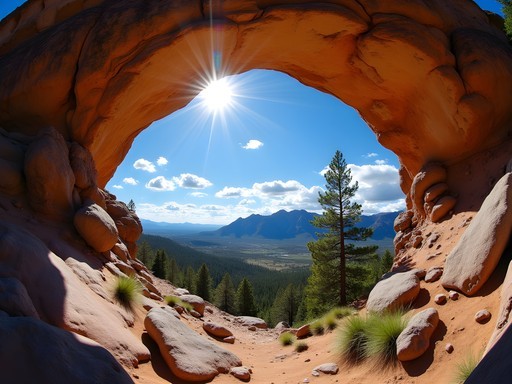
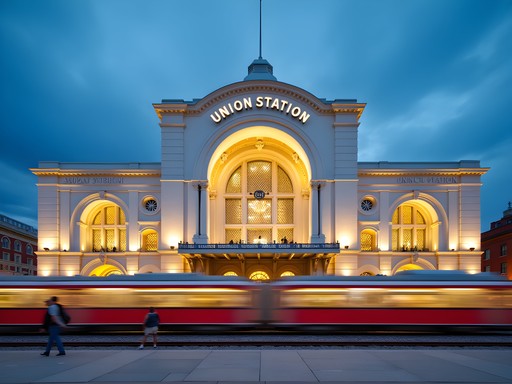
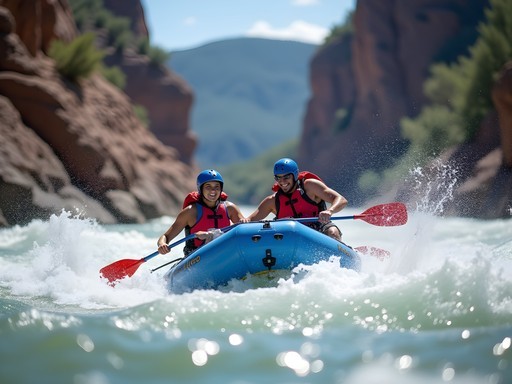
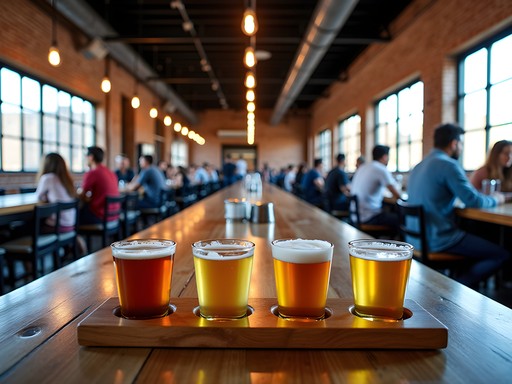
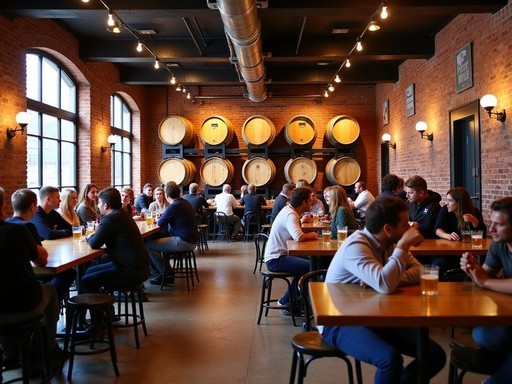


Comments
Sarah Powell
Having photographed Denver extensively last year, I'd add that weather apps are crucial companions for mountain photography here. The atmospheric conditions can change dramatically within hours. I've found that some of the most compelling shots come after brief afternoon thunderstorms in summer when the light breaks through dramatically. For anyone planning a Denver photography trip, don't overlook the smaller parks like Cheesman - the pavilion there frames the downtown skyline beautifully, especially with a telephoto lens that compresses the perspective against the mountains.
redrider
So true about those post-storm conditions, Sarah! Got some of my best shots after waiting out a quick mountain shower. The light gets so dramatic.
MileHighExplorer
Don't miss the pedestrian bridge at Union Station for unique city shots! Great at blue hour.
smartzone
Wow those fall colors in Washington Park look amazing! Adding to my bucket list!
Douglas Bradley
Amit, your composition techniques for balancing Denver's urban elements with mountain backdrops are particularly noteworthy. I found similar challenges when documenting Calgary's relationship with the Canadian Rockies. One technique I've found useful is to scout locations during midday when light is harsh, then return during golden hour with a precise plan. For those reading who want to capture Denver's dual identity, I'd suggest exploring the Highland Bridge area - it offers architectural elements in the foreground with mountain silhouettes behind, especially compelling at dusk when city lights begin to emerge but mountains are still visible.
travellife
Heading to Denver next month specifically for photography! What camera gear did you use for those mountain shots? The dynamic range looks incredible!
Amit Sanchez
I used my Sony A7IV with the 16-35mm f/2.8 GM for most of the landscapes. For the city shots, I switched between that and the 24-70mm. The dynamic range on the A7IV really helps with those mountain scenes where you're dealing with bright skies and shadowed valleys.
travellife
Perfect, thanks! I've been debating upgrading my gear before this trip. I'm still using my old Canon but those mountain shots might convince me it's time for a change. Did you use any specific filters for the mountain shots?
Amit Sanchez
I used a polarizing filter for most of the mountain shots - helps cut haze and makes those blue skies pop. Definitely worth having in the mountains!
sunsetlife
Those RiNo murals are photographer's paradise! Great tips on the lighting.
redrider
Great post, Amit! I've been shooting in Denver for years and completely agree about the light at Red Rocks. That golden hour glow hitting the formations is magical. Did you make it to Lookout Mountain? There's this one spot just before sunset where the city lights start coming on while the mountains are still catching the last rays. Pure photography gold!
Amit Sanchez
Thanks redrider! I did make it to Lookout Mountain but got there a bit too late for that perfect city/mountain transition. Definitely on my list for next time!
redrider
You won't regret it! Aim for about 30 minutes before the official sunset time. The view is worth every minute of the winding drive up.
coffeezone
Just got back from Denver and wish I'd seen this guide before! The light changes so fast in the mountains. Tried shooting from Lookout Mountain but went too late in the day. Any recommendations for good coffee shops with views where you can set up and wait for the right light?
photoperson
Not Amit, but try Aviano Coffee in Cherry Creek or The Molecule Effect - both have great windows and are photographer-friendly. They don't mind if you camp out waiting for the right shot!
coffeezone
Thanks for the recommendations! Adding them to my list for next time!
Jean Wells
I returned to Denver last week specifically to photograph the fall colors Amit mentioned. The urban parks were indeed spectacular - Cheesman Park's tree-lined paths created perfect natural frames. However, I found City Park offered even better compositions with the downtown skyline visible beyond the autumn foliage. A technique that worked well was using a longer lens (70-200mm) to compress the mountains against the city buildings during that magical late afternoon light. For those planning winter photography, the Red Rocks area after a fresh snow provides stunning contrast between the red stone formations and white snow. Just be prepared for rapidly changing conditions - I've experienced four seasons in one day while shooting there in November!
LightChaser
Love that compression technique! Did you have any issues with haze affecting the mountain shots?
Jean Wells
Yes, haze can be an issue, especially during wildfire season. Early mornings typically have the clearest air. I also use Dehaze in post-processing when needed, but nothing beats shooting on a clear day after rain has washed the atmosphere.
Jacob Elliott
Great write-up on Denver's photographic potential! As someone who frequently visits for business, I've found early mornings at Union Station to be perfect for architectural photography - the light streams through those grand windows around 7-8am creating dramatic shadows. For business travelers with limited time, I recommend the 16th Street Mall at dusk - you can capture the urban energy while the mountains glow in the background. My travel tripod has been invaluable for those low-light downtown shots when I only have evenings free. Amit, have you explored the Highland neighborhood? Some fascinating juxtapositions of historic and modern architecture there.
Amit Sanchez
Great tip about Union Station, Jacob! And yes, I love Highland - especially the views back toward downtown from there. Next time I'll try to add a section about that area.
Venture X
Premium card with 2X miles, $300 travel credit, Priority Pass